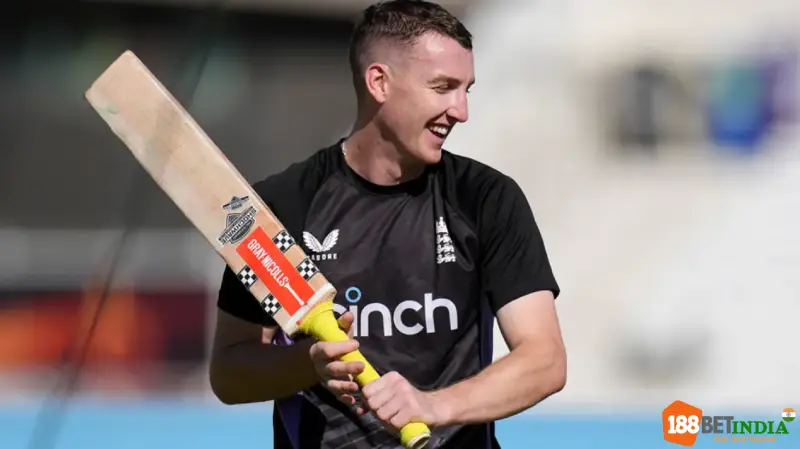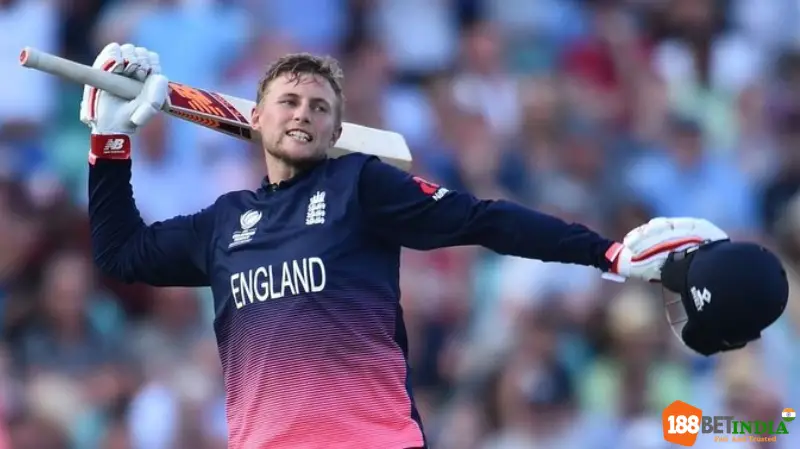England and Australia clashed once again at Trent Bridge, and this time, it was Harry Brook’s turn to lead the Three Lions as they looked to renew their fortunes after a challenging World Cup defense last year. As England captain for the day, Brook won his first toss and opted to bat first in what promised to be a thrilling ODI against Australia. With several key players missing on both sides, including Jos Buttler and Australia’s big three pacers, the match provided a platform for new faces to step up.

England’s Bold Decision to Bat First
In the press conference leading up to the match, Harry Brook, standing in for the injured Jos Buttler, exuded confidence. His decision to bat first was straightforward: “Put a little pressure on them in the first innings and try to get a big score.” Given the flat track at Trent Bridge, traditionally a high-scoring ground, Brook’s approach was sound, and he made it clear that England would be aggressive right from the start.
England’s playing XI featured a mix of experience and youth. Jofra Archer was making his much-anticipated return to ODIs after an 18-month hiatus, while Jacob Bethell earned his first ODI cap, having already made his T20I debut. The spotlight was also on Matthew Potts, who replaced Reece Topley, who fell ill overnight. Ben Duckett and Phil Salt were tasked with giving England a strong start, with Will Jacks and Brook anchoring the middle order. The dynamic duo of Liam Livingstone and Jamie Smith added depth to England’s batting, making them formidable contenders to post a big score.
Australia Hit by Sickness Bug: A Weakened Lineup
Australia, meanwhile, was struck by a sickness bug that sidelined key players like Pat Cummins, Mitchell Starc, and Josh Hazlewood. Despite this, Mitchell Marsh, Australia’s stand-in captain, remained optimistic. “We have 11!” Marsh joked at the toss, acknowledging the depleted squad but displaying a fighting spirit.
Australia’s lineup saw some unusual names, including Ben Dwarshuis, the left-arm seamer from New South Wales and Sydney Sixers, who made his international debut at the age of 30. Dwarshuis would share the new ball with Sean Abbott, while Adam Zampa marked his 100th ODI appearance. With Cummins, Starc, and Hazlewood absent, Zampa’s role became even more critical, as he looked to spin Australia to victory on a ground that has historically favored batters.
England’s Focus on Redemption
England’s ODI squad has been in a phase of rebuilding, especially after their underwhelming World Cup campaign in India last year. The absence of regular captain Jos Buttler was a significant blow, but it provided an opportunity for players like Brook to take the reins. England’s recent focus has been on developing a more balanced squad with experienced players like Archer and Rashid leading the bowling attack, while new talents like Bethell and Carse brought energy to the field.
England’s lineup, on paper, had the right mix of explosive batting, all-round options, and an experienced bowling attack. However, the true test would come on the field. Brook’s captaincy debut added another layer of excitement, as the young skipper was keen to showcase his leadership ability alongside his batting skills.
The Bowling Attack: Jofra Archer’s Return
One of the most eagerly anticipated aspects of the match was Jofra Archer’s return. After a prolonged absence due to injury, Archer was back to lead England’s bowling attack. Known for his blistering pace and ability to take crucial wickets, his presence gave England a significant boost. His bowling partnership with Matthew Potts, Adil Rashid’s experience, and Livingstone’s handy spin made for a well-rounded attack that was ready to exploit Australia’s weakened batting lineup.
Australia’s Challenge: Leaning on New Faces
Australia’s batting lineup, led by captain Mitchell Marsh, looked slightly thin without the services of players like David Warner and Glenn Maxwell. However, the Aussies still had firepower in Travis Head and Steven Smith, while Marsh himself has been in fine form.
Ben Dwarshuis’ international debut added another layer of intrigue. The left-arm pacer has been a consistent performer in domestic cricket and the Big Bash League but making his debut in an international arena was always going to be a test of character. All eyes were on him to see if he could deliver on the big stage.
FAQs
Brook wanted to put pressure on Australia early by setting a big score and taking advantage of the batting-friendly conditions at Trent Bridge.
Jacob Bethell made his ODI debut for England, while Ben Dwarshuis earned his first ODI cap for Australia at the age of 30.
Australia’s key pacers were sidelined due to a sickness bug that hit the team in the days leading up to the match.
Archer’s return after 18 months added a much-needed boost to England’s bowling attack, and his performance was eagerly anticipated.
Adam Zampa played his 100th ODI match, making him a crucial figure in Australia’s bowling attack, especially with the absence of their frontline seamers.

Conclusion
As England and Australia clashed at Trent Bridge, the stakes were high for both sides. England’s fresh lineup under Harry Brook’s captaincy looked to make a statement, while Australia, hit by illness and missing key players, fought to stay competitive. The match promised an exciting contest with Jofra Archer’s return, Ben Dwarshuis’ debut, and Adam Zampa’s milestone appearance adding to the drama. England’s focus on redemption and Australia’s resilience in the face of adversity ensured that fans were in for a thrilling encounter, with both teams vying to take control of the ODI series.
